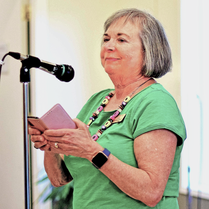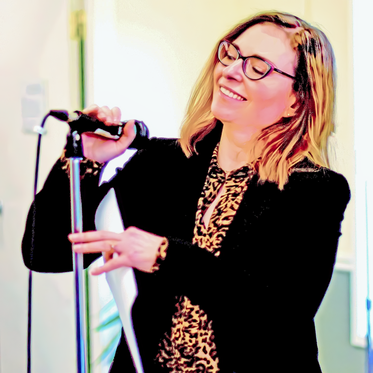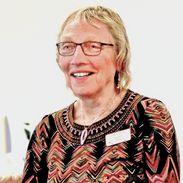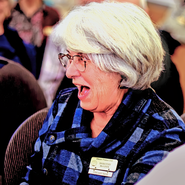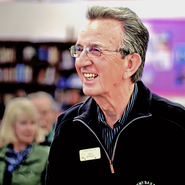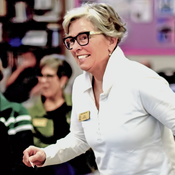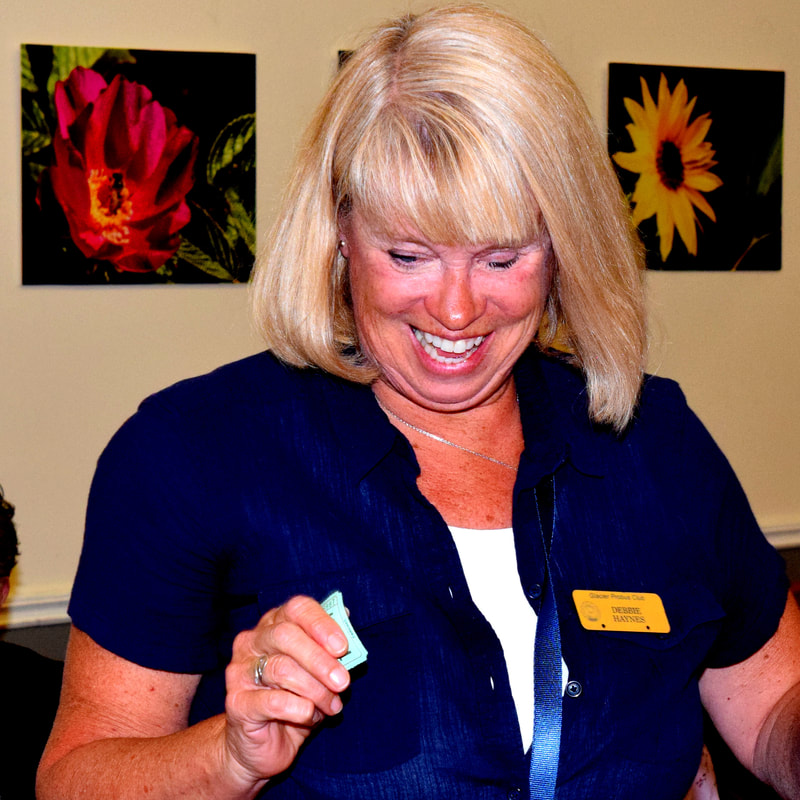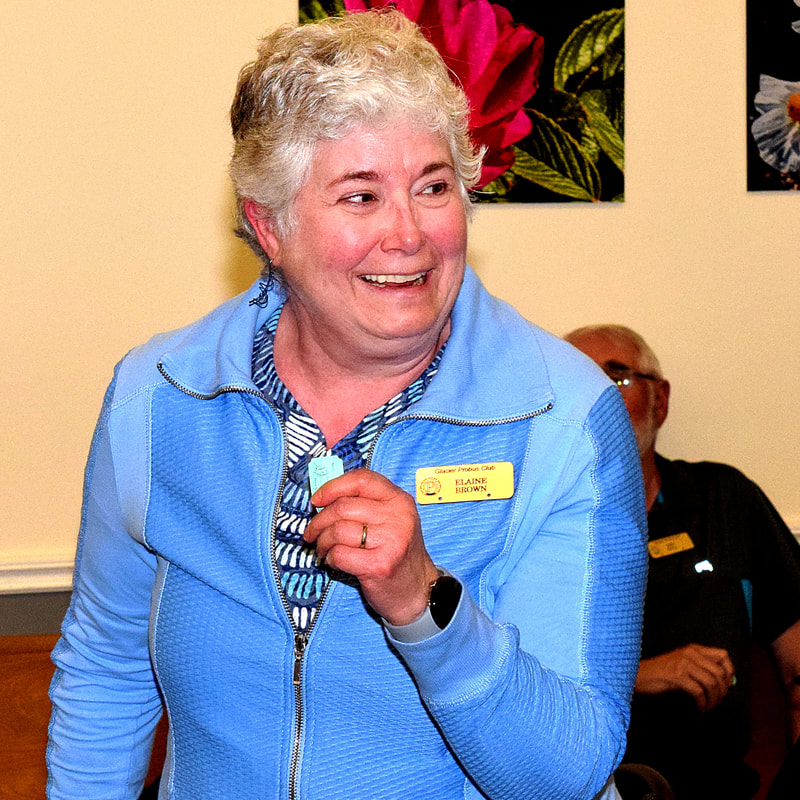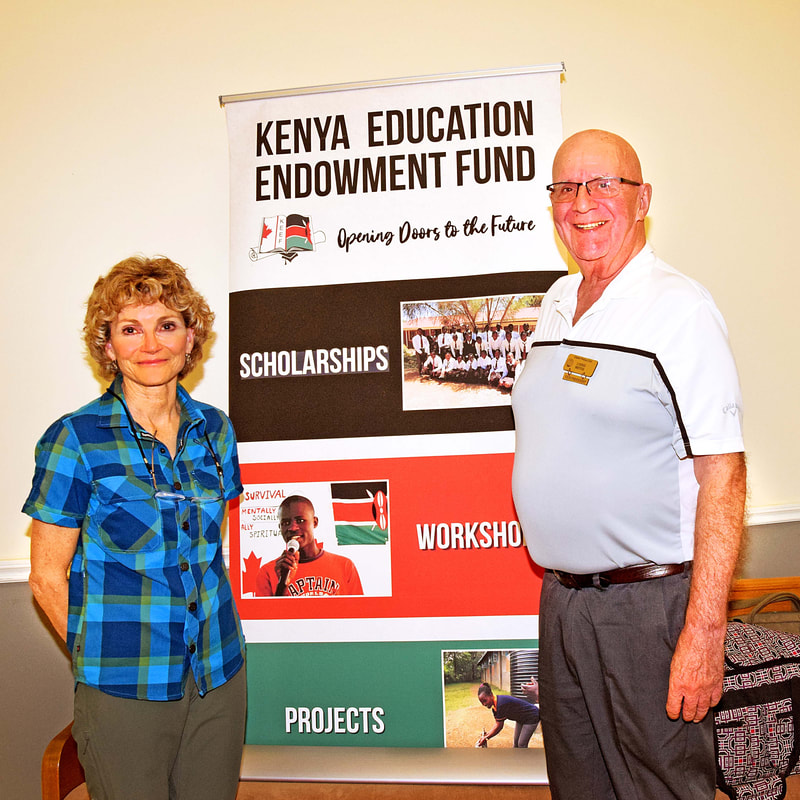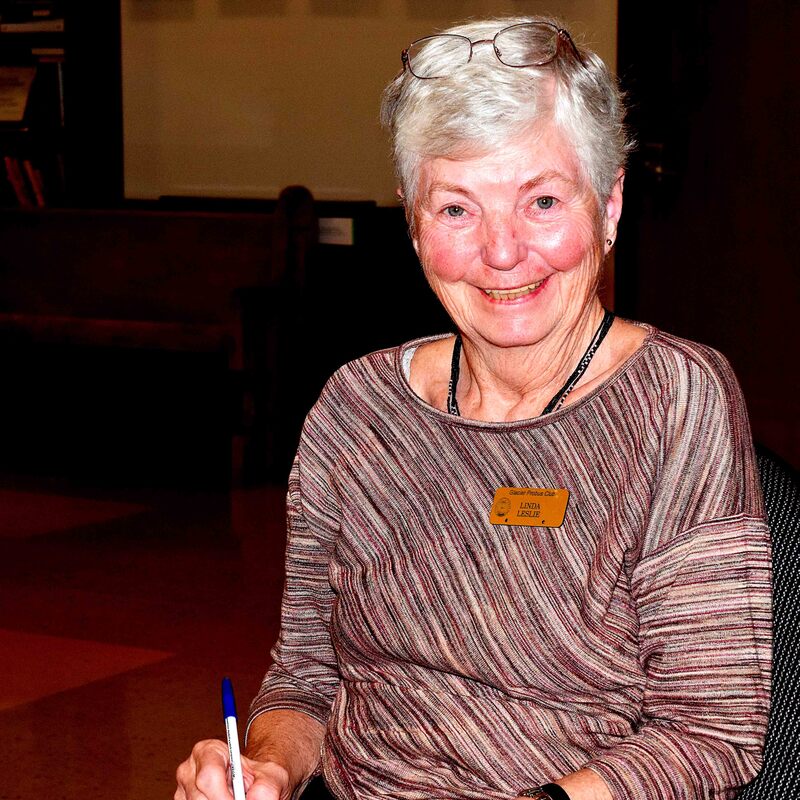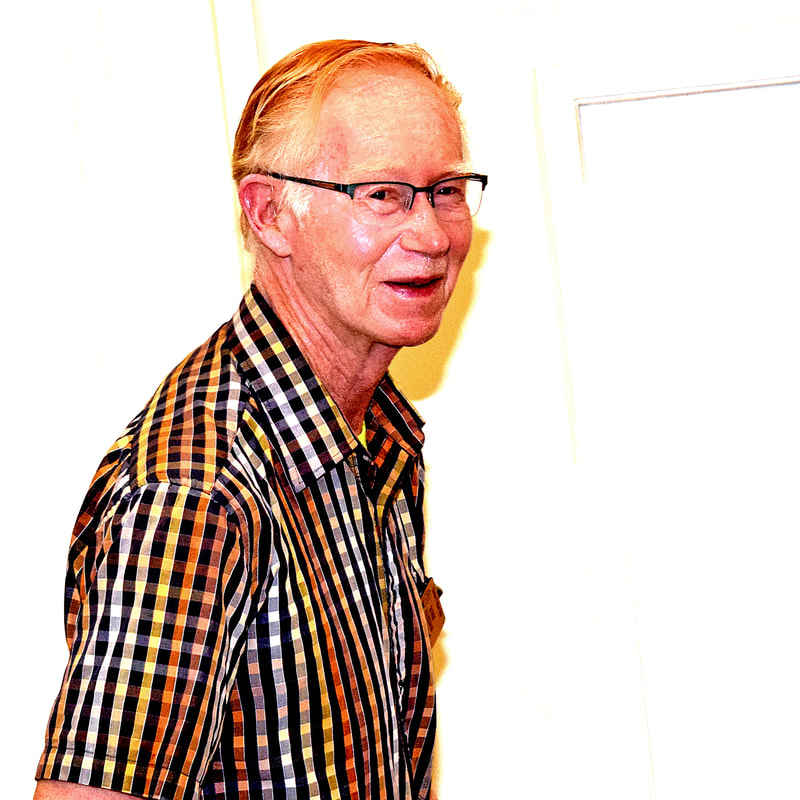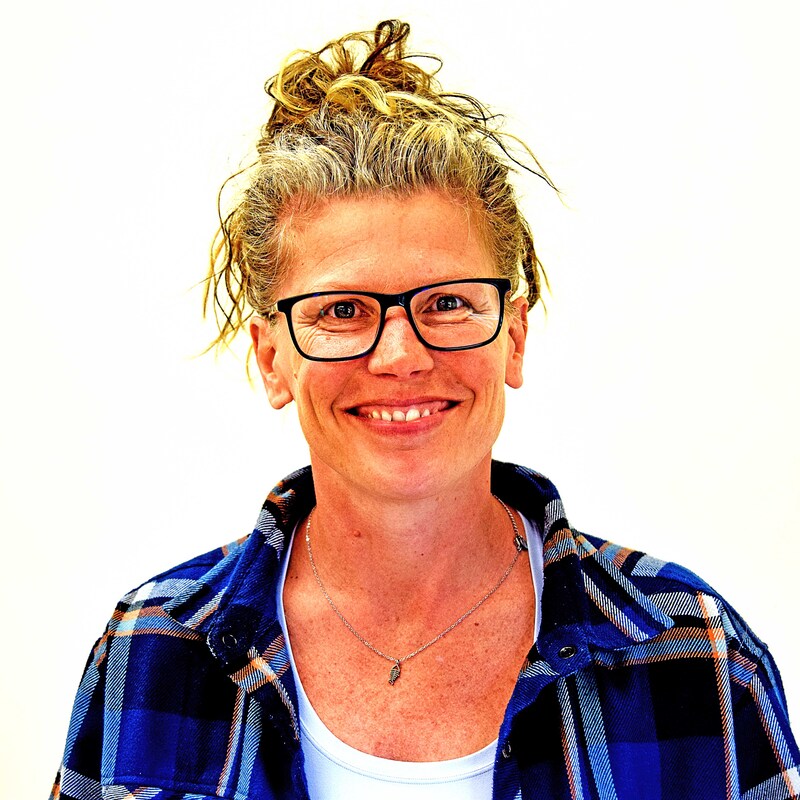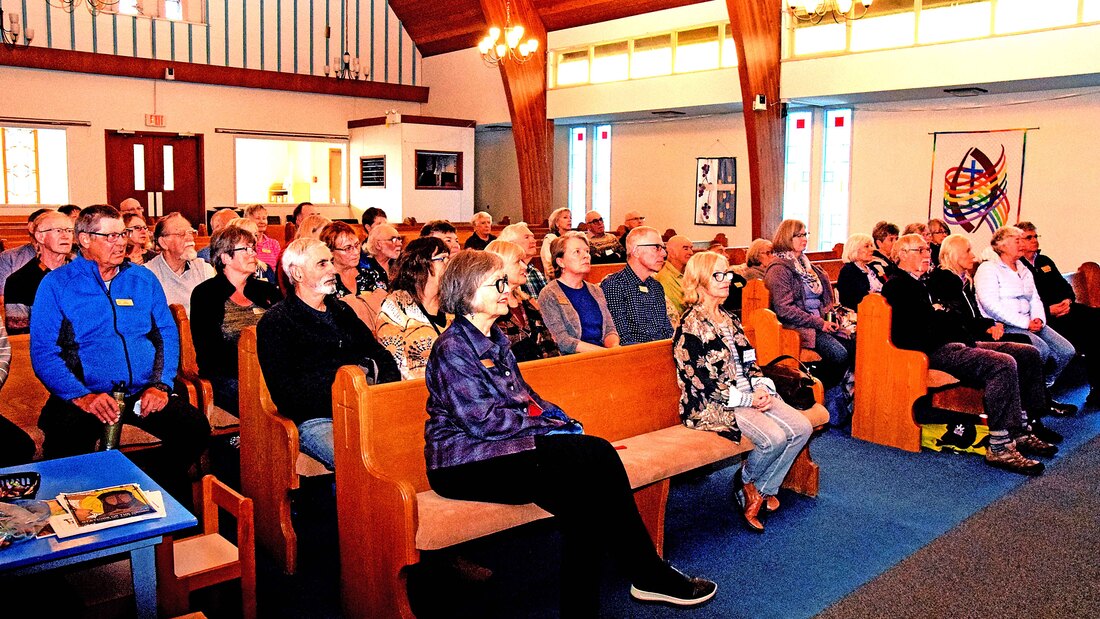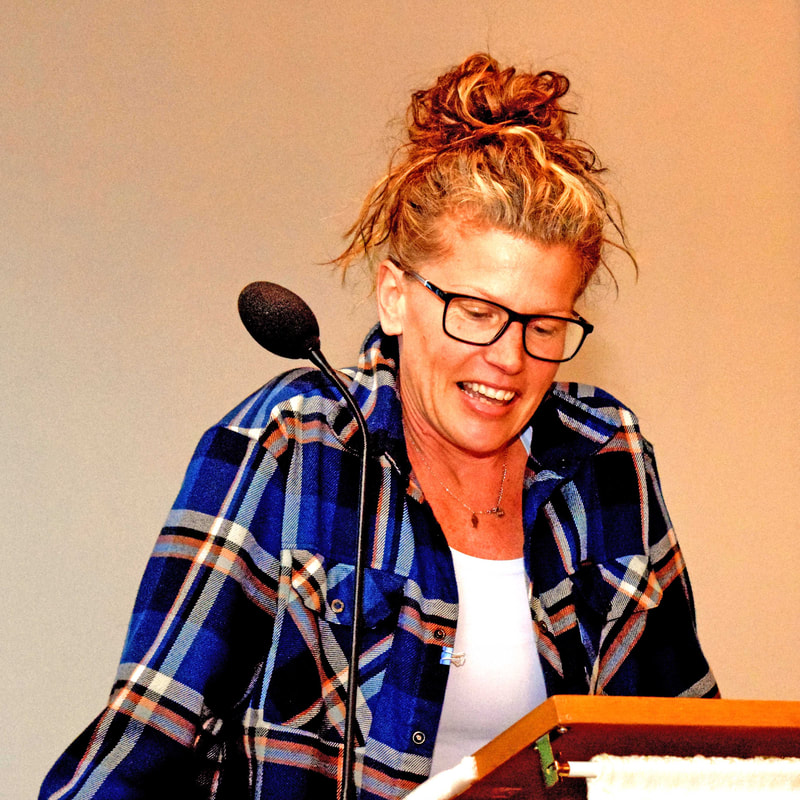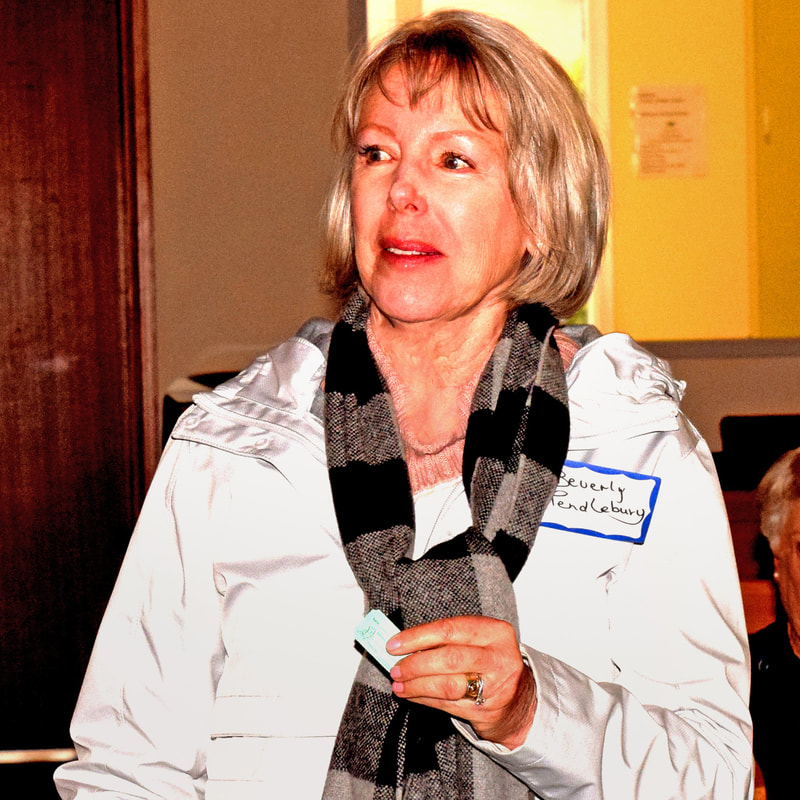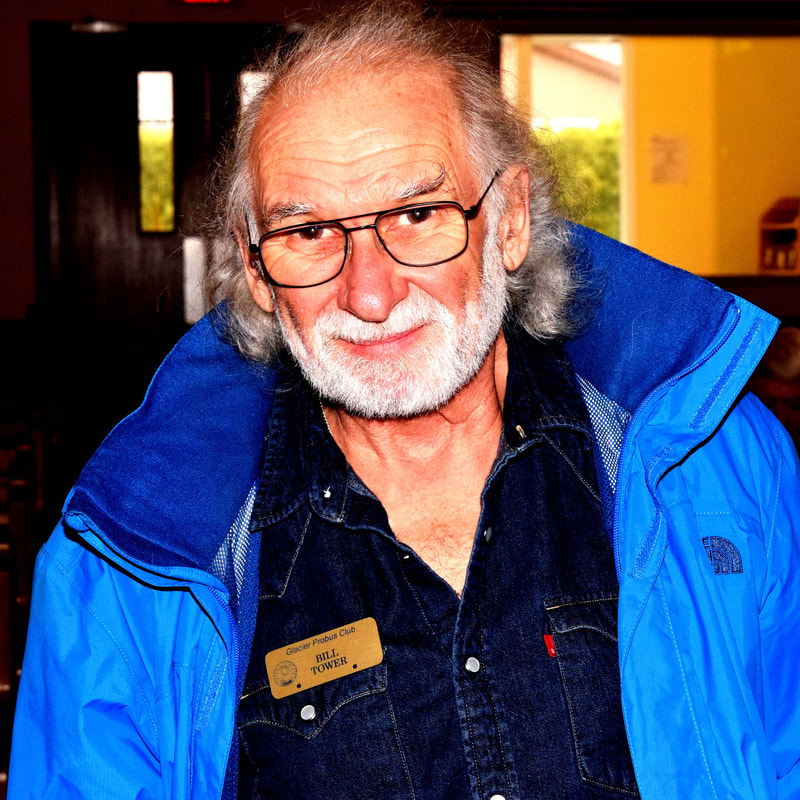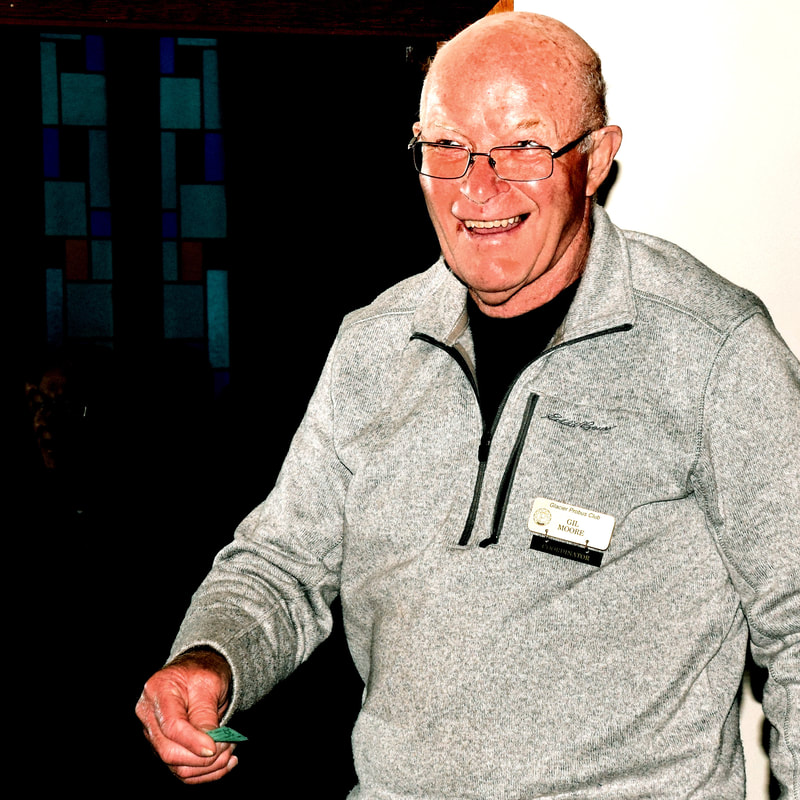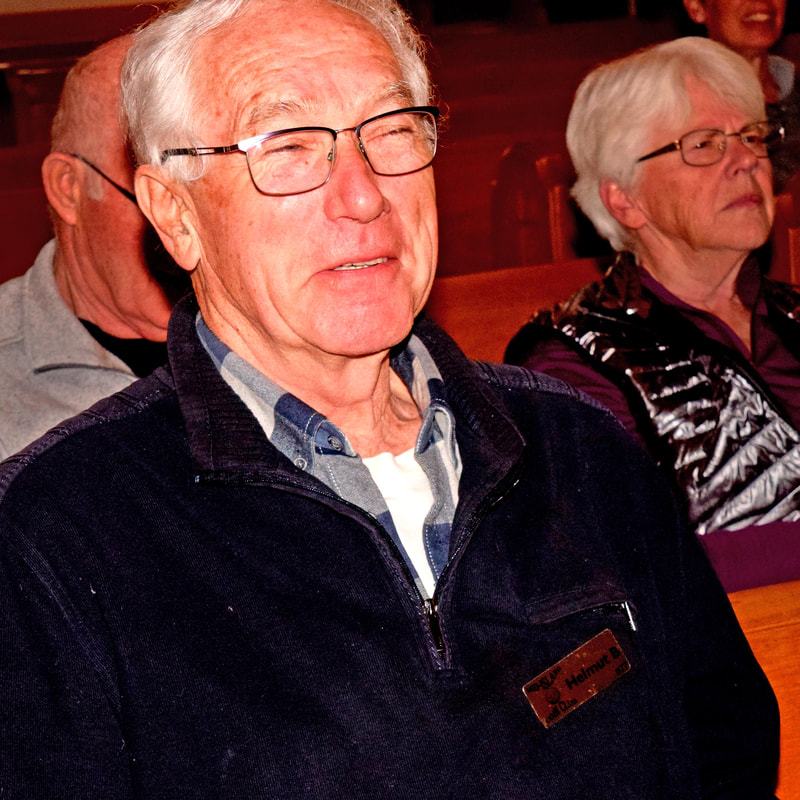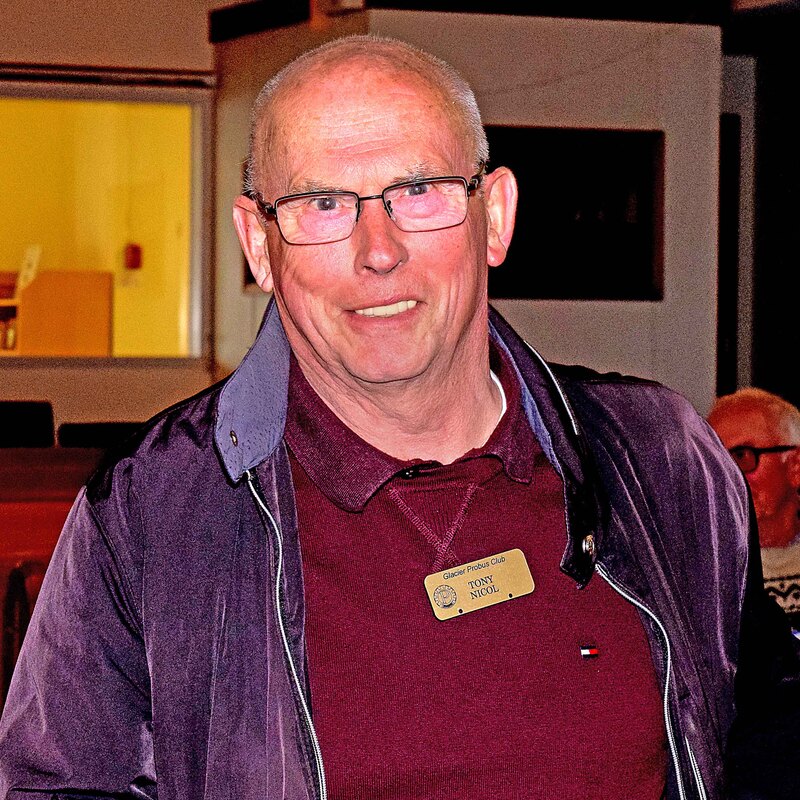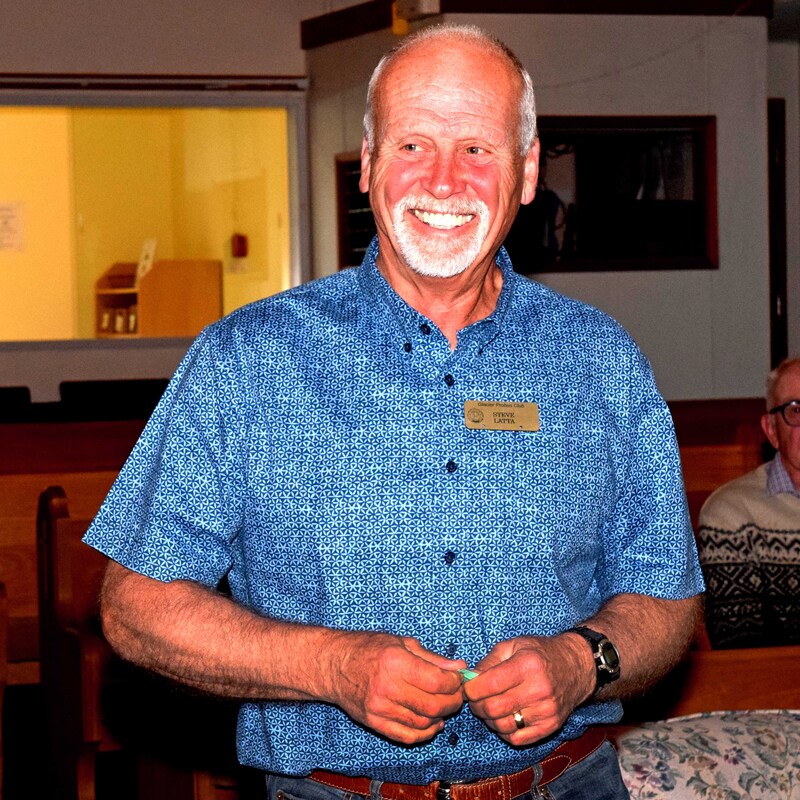|
PLEASE REMEMBER ALL GLACIER PROBUS CLUB ACTIVITIES ARE SCENT FREE INCLUDING PERFUMES, ESSENTAL OILS, CIGARETTE, AND CANNABIS SMOKE Cruise to Princess Louisa Inlet 6 July 2024 Over twenty members took an overnight cruise to Princess Louisa Inlet, and enjoyed several great meals and amazing scenery. PRISMA Cruisers travelled to Powell River for lunch and a wonderful concert
30 June 2024 On June 29, over 80 Glacier Probus members joined hundreds of other PROBUS club members for the annual cruise to Powell River for a delicious lunch and the final concert of the Pacific Region International Summer Music Association (PRISMA) Festival and Academy. A full orchestra of young musicians from around the world played an inspired programme of Mahler. The concert also included two performances by the winners of the soloist competition. A bit of rain did not dampen the day! ===============
New Management Committee for 2024-25 7 June 2024 Here is your new Management Committee for the coming year: • President: Ann Zanbilowicz • Vice President: Jennifer Smith • Past President: Lorne Meyer • Treasurer: Marie Morck • Secretary: Vicki Matthew • Activity Groups Director: Gord Tarzwell* • Membership Director: Brenda Latta • Special Events Director: -- Facilities Directors: Lisa Powell, Diane Snowadski, Cathy Schneider • Technology Director: Cat Pedersen • Registration Director: Donald Bourne • Communications Director: Alan Brown • Director at Large: Steve Ray • Director at Large: Betty Akesson *Alan Brown will temporarily cover for Gord during July & August June Meeting and AGM Report
7 June 2024 On June 6th, 67 club members met for our tenth Annual General Meeting. Before the business portion of the meeting, we listened to a powerful presentation from guest speaker Kathleen Ann Kelly, a retired nun who worked as a nurse midwife in the slums of Peruvian villages and cities for almost three decades, at the same time as a turbulent revolution embroiled the country. Kathleen, who lives in the Comox Valley, recently wrote Where Dogs Dwell, her memoirs of those years. After her presentation, we watched a great little video of events and activities over the past year, all put together by Steve Ray. Registration Director Donald Bourne drew eight door prize tickets for gift certificates to the Griffin Pub and Gladstone Brewery. Interestingly, before the draw began, Donald revealed that he had never won a door prize himself, and then proceeded to not win anything again. Door Prize winners: Gladstone Brewpub: Lindsey Sparks, Alan Brown, Steve Ray, Dorothy McGinn Griffin Pub: Debbie Haynes, Barry Russell, Linda Leslie, Tony Nicol AGM: We had achieved quorum (25% of our membership), so the business portion of the AGM then followed. Treasurer Dorothy McGinn presented a financial statement for the past year and a budget for the coming year, and both were approved. Dorothy noted that due to increased technology costs in the coming year, membership fees would see a marginal rise to $40. Past President Alan Brown presented the proposed Management Committee for the coming year, which was approved. With that, the meeting was adjourned. Our next meeting is on Thursday, September 12 — have a great summer! Kathleen Kelly will be speaking. At a time of violent political events in Chile, Kathleen Kelly was working in a Santiago Hospital. She worked for 20 years as a nurse and midwife in the high Andes of Peru, delivering babies, in unbelievable circumstances and came a trusted friend to many families. Her story is fascinating, controversial and sometimes amusing.
Lorne introduced Alan Brown. Alan is trying to fill 3 positions for next year: a Special Events organizer, Christmas party organizer and another member at large. Steve Ray showed us where to find Probus Canada insurance options on their website. They include Home Insurance, Travel Insurance and Auto Insurance - www.canadaprobus.ca, click on Reference Guide and Insurance and peruse the headings from there. Steve reminded us of the summer, July 18, picnic BBQ. Ann Zanbilowitz introduced Stu Isbister who performed a song that he wrote called “No place to go”. It is about homelessness in the Comox Valley. Ann then introduced the guest speaker, Steve Williams who talked about the Millard-Piercy creeks watershed stewards. They work on 13 square km. and preserve and restore the flora and fauna. He talked of the impact of climate change and urbanization. They do fish monitoring, smolt counting, spawned surveying and fly trapping. They are all about Habitat enhancement. Another member of the watershed stewards, Helmet, took over the talk and spoke about how he monitors water quality. Steve then talked about Education and Outreach activities. They have created a training manual for new stewards. Their contact info is. [email protected] 57 people attended the meeting. Don Bourne drew for prizes.
John McGinn Michael Nils Ann Isbister Myrna Trimmer Kevin Wilson Brenda Latta Dianne Snowadzki A majority of the Activity Group leaders were recognized for the hard work and dedication to their jobs at an event on Thursday April 18th. 2024. A good time was had by all. 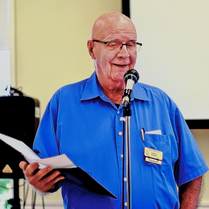 Held as usual at Comox United Church, the meeting was opened at 2 pm by Club President Lorne Meyer who welcomed those present and then told several “seniors” jokes. 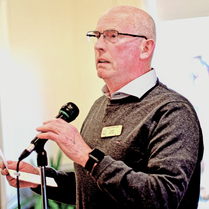 Tony Nicol outlined the details of the Club’s 10th Anniversary “Black and White” Gala Dinner Saturday, May 5th. at d’Esterre House in Comox. Tickets are $60 per member, or their significant other, no other non-member guests. Registration and payment may be made through the Special Events section of our Club website. President Lorne thanked the speaker for her presentation and with Donald Bourne conducting the draw of door prize tickets, winners being Karen Barr, Dorothy McGinn, Ken Rowley and Lisa Powell. The April Monthly Gathering closed at about 3 pm. Meeting report prepared by Ian Thompson, Club Communications The speaker at the next monthly gathering will be family law lawyer Alana Zanbilowicz who will reveal the secrets of family property law in British Columbia. Gain invaluable insights on how to protect your assets and avoid unwittingly becoming liable for your spouse's debts.
Forget about marriage, did you know that you don't even have to live together to be "spouses" under the BC Family Law Act? Or that you could be legally required to split your assets (and your spouse's debts) if your relationship ends? Gain invaluable insights on how to protect your assets and avoid unwittingly becoming liable for your spouse's debts. Don’t miss out on this important presentation! Disclaimer:This presentation will provide information only and does not constitute legal advice. The speaker for the Monthly Gathering on Thursday March 7th is Evelyn Marie Gillespie who served as MLA for the Comox Valley riding in the Legislative Assembly of British Columbia from 1996 to 2001 as a member of the BC New Democratic Party.
Please click below to download and view the minutes from the Monthly Gathering on Thursday February 1, 2024. A big thank you to Dorothy McGinn for taking these notes!
At the Monthly Gathering on Thursday January 4th, there will be two speakers:
Members gathered at 1:30pm to enjoy light refreshments and conversation.
President Lorne Meyer called the meeting to order at 2:00 and opened with some great “dad jokes” about getting older. Announcements:
Introduction of Guest Speaker: Vice President Ann Zanbilowicz introduced the guest speaker, Jim Lariviere from the Comox Fire Department. Jim served 42 years in both the Royal Canadian Navy and Airforce. He then started a fire service career and in the year 2000 Jim was hired as a full-time Assistant Fire Chief. Among his qualifications are Fire Officer Four and Fire Inspector Level Three. Besides Jim’s operational duties he is responsible for First Responder training, Public Education, Fire Inspections, Fire Engineering, etc. Jim described and demonstrated how to handle the following emergencies:
Some interesting highlights:
Gift Cards ($25) from Milano Coffee were won by: Donna Young, Nancy Brown, Diane Needham and Jill Almond. Notes by Cat Pedersen on behalf of Secretary, Vicki Matthews At the Monthly Gathering on November 2, Jim Lariviere, who is Assistant Fire Chief, Comox Fire Rescue will be our Guest Speaker. He has served 42 years in the both the RCN and the RCAF. He has been a Firefighter for over 42 years.
His topic is how to deal with a Cardiac Emergency. He will cover the use of the Automatic External Defibrillator (AED) and the CPR which is required to go with the AED. Members gathered at 1:30 to enjoy light refreshments and conversation. President Lorne Meyer called the meeting to order at 2:00 and opened with some “groaners”. Announcements: John McGinn publicized the Orca Probus singers group. Second Tuesday of each month from 2:00 to 4:00. Ian Thompson will send out details to the membership. Introduction of Guest Speaker: Ann Zanbilowicz introduced our speaker Wendy Bancroft who helps people write their “own” stories using a technique called GAB – Guided autobiography. It is a warmly structured approach to help people recall, write about and share important memories. It is not therapy but people often find it therapeutic. It usually involves a six week course. It is theme based: family, health, money, relationships, etc. Sessions are confidential. Stories are memoirs – very short, usually 1000 words. They are NOT autobiography which is a story of a life. They are a memoir which is a story from a life. There was a ten minute break for “Flash writing” about a "Decision you made that was the right decision". We then broke into groups of 4 to share our work. To learn more: www.wendybancroft.com . Ann Zanbilowicz distributed handouts that summarized the process. Gift Cards: from Roys' Town Pub were won by: Cheryl McMahon, Jennifer Smith, Tannis Baker, Sylvia Giles. There were 55 members in attendance. Thanks to Dorothy McGinn for taking these notes for Vicki. The Guest Speaker at the October Monthly Gathering is Wendy Bancroft
Wendy has been helping people tell their stories for over 40 years—as an award-winning journalist with the Canadian Broadcasting Corporation, a researcher with two national research organizations and, for several years, in her own video production company. She uses stimulating exercises and questions to spark creativity and trigger memories of different aspects of commonly shared experiences like turning points in life, family influences, health, and work. Bring a pen and something to write on, and Wendy will give you a fun and interesting taste of how to share your memories using GAB, guided autobiography. Meeting Notes - September 7, 2023 Glacier Probus Club Monthly Gathering Held at Comox United Church Light snacks were served along with hot drinks at 1:30. The socializing was lively and friendly. Friends reconnected and other people chatted with new members. Thanks, Brenda!
Lorne brought the meeting to order at about 2:04 pm. He regaled the members with a few short jokes, none of which I can remember now, but some were groaners. He welcomed all members to the meeting and asked if we had any new members. Six people stood up and Lorne warmly welcomed them. Presentation of Probus Award by Probus Canada representative: Ian Kennedy was introduced, representing Probus Canada. He spoke about what a gift it is to be in charge of the Island with the only downside being travelling. One of his duties is to visit clubs on their significant anniversaries. The certificate was developed on July 16, 2023 anniversary. He present the certificate to Lorne. Passed on good wishes from the national board. Some of the other Island Probus’ are up to 25 years old. He touched on why there will be no other club added to Comox Valley - mainly because Campbell River has established one and they have a lot of members that came to Comox Valley. Activity Groups: Jim Belair then talked about Activity Groups which are the heart of this Glacier Probus Club. He listed all 25 different activity groups. Some have been running all summer and some are just restarting after the summer. He mentioned Random Readers have changed their names to Recommended Readers. Jim went over how to use the website to find information and to join individual clubs. Then he had the Activity Coordinators stand and the members showed their appreciation. Jim summed his presentation up with some pictures of how far the Coordinators will go to do their jobs. You had to be there! Announcements of upcoming Special Events to celebrate the 10th Anniversary throughout the Year:
Alan reminded us of the other, annual events:
Draw for Door Prizes - Donald Bourne: Winners of Kiki’s Gift Card was Lindsay Sparkes, and winner of the Flying Canoe prizes were Mary Finnan, Jill Almond, Vicki Matthew and Dawn Moore. Adjournment at 2:32 REMINDER of Glacier Probus Management Meeting on Thursday September 28, 2023. REMINDER OF Monthly Gathering which is on October 5, Snacks & Hot Drinks at 1:30. Meeting at 2:00. The focus of this meeting will be the 10th Anniversary Celebration! The Committee working on the 10th Anniversary will be presenting.
This is the slideshow set to music, with photos extracted from the Activity Group News during the entire past year. You may also download the video, if you wish. Turn your speakers up and click on the image to play President Alan Brown opened the monthly meeting, welcoming those present on this rainy day, held as usual in the Hall at Comox United Church.
He encouraged Club members to volunteer to stand for election as Secretary or Vice President at our Annual General Meeting this June 1st. He outlined the Secretary’s duties setting agendas and taking minutes for a term of one year while the Vice President’s commitment is to a three year term: first as VP organizing our monthly speakers, then as President chairing meetings and finally as Past President chairing our Nomination Committee. Current VP Lorne Meyer pointed out that speakers are lined up through next October. Alan then noted that our June PRISMA Symphony Cruise, an annual Special Event, has 17 tickets still available and those members already committed need to pay Michele Morton this April so we may take advantage of early discount pricing. He further commented that Comox Valley, with four Probus Clubs, has the highest penetration ~ Probus members as percent of population ~ in all of Canada. Three Clubs, Orca, Strathcona and Glacier, are at capacity with waiting lists while the fourth and original, Comox Valley, has an aging membership and limited activities. Club Presidents are working to form a fifth Club to draw from current waiting lists. Alan gave the meaning of some Texting Abbreviations ending with GGPBL ~ Gotta Go, Pacemaker Battery Low. Donald Bourne announced that today's Gift Cards are from Kiki’s located at 1811 Comox Ave. in Comox, publisher of Compass magazine, offering printing service, gallery and gifts in a coffee shop. Worth a visit. As our guest speaker’s computer would not connect to the Hall projector, but would to the Church projector, the meeting was moved to the Nave. With our speaker Esther Sample at the Pulpit, she explained how growing up and living near the water, spending 10 years as a commercial fisherman plus kickboxing activity inspired her passion for west coast living. Her visual memories ~ laid out on canvas ~ are intended to inspire others to connect through her art with their own west coast realities. She spoke of taking 40 to 100 hours spread over several weeks to create one painting, used the projector to show her current canvas in stages of added complexity to its present yet unfinished state. Esther commented that her art has influenced her personal development and with increasing confidence she is moving toward a more abstract style of illustration. Her presentation was well received and after answering a number of questions from Club members in the pews she was thanked by President Alan Brown for attending and sharing her enthusiasm with our Club. Esther’s website is at https://www.esthersample.com/ . Door prizes for Kiki’s gift certificates went to Beverly Pendlebury, Bill Tower, Gil Moore and Helmut Breitinger plus I-phone stands to Tony Nichol and Steve Latta. Photos attached of our speaker, the Church and our door prize winners. Photos and Meeting Notes by Ian Thompson, Club Communications Next General Meeting will be Thursday May 4, 2023. Our guest speaker will be local artist, ESTHER SAMPLE.
Using her experiences from her commercial fisherman career and the inspiration from BC's rugged west coast, Esther's oil and acrylic paintings come alive and reconnect the viewer to nature and life on the water. Esther will share her life and artwork. COME AT 1:30 FOR A SOCIAL VISIT BEFORE THE MEETING STARTS AT 2:00. DON'T FORGET YOUR MUG AND NAME TAG! YOU MIGHT WIN A $25 GIFT CERTIFICATE |
||||||



